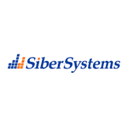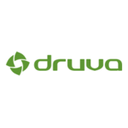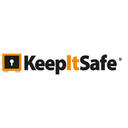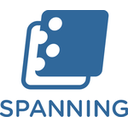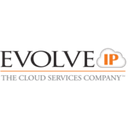Business Continuity software: purchase guide
Business Continuity Software in 2025: Keeping Your Business Online When Everything Else Goes Offline
What Is Business Continuity Software
Business continuity software is your organization's safety net when things go sideways. It's designed to keep operations running during unexpected disruptions—whether that’s a cyberattack, hardware failure, power outage, or even a global pandemic. At its core, this type of software helps businesses plan for, respond to, and recover from emergencies without skipping a beat.
But in 2025, business continuity isn’t just about backups or disaster recovery. It’s about proactive risk mitigation, identity access management, compliance auditing, and ensuring that critical workflows never grind to a halt. Whether you're a growing company or a global enterprise, having the right continuity systems in place is no longer a luxury—it’s mission-critical.
Why Business Continuity Software Matters More Than Ever
Imagine this: your main server crashes, or your network gets compromised in a ransomware attack. Without a continuity plan or tools in place, your team scrambles, your customers wait, and your revenue takes a hit. Now flip the scenario. With the right business continuity software running quietly in the background, your team receives alerts, switches to failover systems, maintains secure access, and gets back to work—often without customers noticing a thing.
In today's always-on business environment, uptime is directly tied to customer trust and financial stability. The cost of downtime? It’s measured in lost sales, damaged reputations, and regulatory fines. Business continuity software helps eliminate the panic and chaos. It enforces security policies, manages access, automates user recovery, and keeps critical systems humming—even when your infrastructure isn’t.
And it's not just about big disasters. Even something as simple as a misconfigured user account or accidental deletion can cause a chain reaction. Continuity means prevention and resilience, working together.
How to Choose the Right Business Continuity Software
Choosing a business continuity solution isn’t about picking the tool with the longest feature list—it’s about finding a system that’s reliable, adaptable, and easy to roll out before you're in crisis mode.
First, consider identity and access management. Many outages aren’t caused by system failure but by mismanagement of access controls. You’ll want tools that offer user provisioning, self-service password recovery, and access request workflows that are both secure and fast.
Auditability is just as critical. During or after an incident, you need to know who did what, when, and why. Look for software that tracks user behavior in real-time, logs administrative actions, and automatically flags anomalies.
Ease of deployment and scalability also matter. Your continuity software should integrate cleanly with your existing infrastructure—Active Directory, cloud apps, hybrid environments—and be able to scale with your business without heavy configuration each time.
Finally, don’t underestimate usability. The platform should empower IT teams and end users alike. Whether it's resetting a password, responding to a security alert, or running a compliance report, the interface should feel intuitive, not intimidating.
How to Implement Business Continuity Software Effectively
Implementing continuity tools is more than flipping a switch—it’s a strategic rollout. Start by identifying your most business-critical systems and user groups. Which teams can’t afford downtime? What apps do they need access to immediately? From there, configure role-based access, enforce multi-factor authentication, and deploy self-service portals that reduce dependency on IT during high-stress situations.
Next, work with your compliance or security teams to define audit policies. Automate alerts for unusual behavior and ensure that logs are retained and easily searchable. This not only protects you in real time but also makes audits faster and less painful later.
Training is key. Empower your team with workflows and guides so they know what to do when systems are under pressure. Simulate outages or account lockouts, and test how quickly your continuity plans kick in. The faster the response time, the smaller the impact on your business.
Finally, review everything regularly. Just because your continuity solution works today doesn’t mean it will scale with your growing cloud architecture or remote workforce. Keep testing, updating, and adapting.
Top Business Continuity Software in 2025
| Software |
Key Features |
Pricing |
Trial & Demo |
Best For |
| ManageEngine ADManager Plus |
Automates Active Directory user and group management, helps prevent access issues during emergencies |
From $595.00/year |
✅ Free version
✅ Free trial
✅ Free demo |
Organizations seeking robust identity and access management for continuity planning |
| ManageEngine ADAudit Plus |
Tracks changes to AD in real-time, with full auditing and compliance reporting |
Pricing on request |
✅ Free version
✅ Free trial
✅ Free demo |
Businesses needing real-time access tracking and audit readiness |
| ManageEngine ADSelfServicePlus |
Enables secure self-service password resets and account unlocks to minimize downtime |
Pricing on request |
✅ Free version
✅ Free trial
✅ Free demo |
Teams aiming to reduce helpdesk load and ensure fast recovery during user lockouts |
Business Continuity Trends for 2025
The way we approach continuity is changing—and fast. First, identity resilience has become the frontline defense. Instead of waiting for systems to fail, smart businesses are proactively investing in automated user management to prevent failures before they happen. Expect to see increased adoption of AI-driven access behavior monitoring and predictive alerts that flag weak points before they break.
Next, zero trust architecture is driving continuity strategy. It’s no longer safe to assume internal users or systems are trustworthy by default. Continuity software is evolving to enforce continuous verification of every device, every session, and every access request.
Hybrid infrastructure is another big trend. With teams distributed and workloads split across on-prem and cloud, continuity software must handle complexity—ensuring that failover policies and access controls work seamlessly regardless of where apps live.
And perhaps most importantly, employee empowerment is finally part of the equation. The best continuity tools are user-friendly, offering self-service capabilities that reduce IT bottlenecks. From resetting a password to requesting access, continuity now starts with the people who rely on your systems every day.
Conclusion
In 2025, business continuity isn’t about “what if.” It’s about “when”—and how fast you can respond. Having the right software in place means your team can act quickly, maintain compliance, and serve customers without interruption.
Choose tools that reduce complexity, automate critical tasks, and scale with your infrastructure. Train your teams. Test your response plans. And treat continuity not as insurance, but as an enabler of business growth.
Because when disaster strikes, your business shouldn’t skip a beat. It should keep going—securely, intelligently, and confidently.

